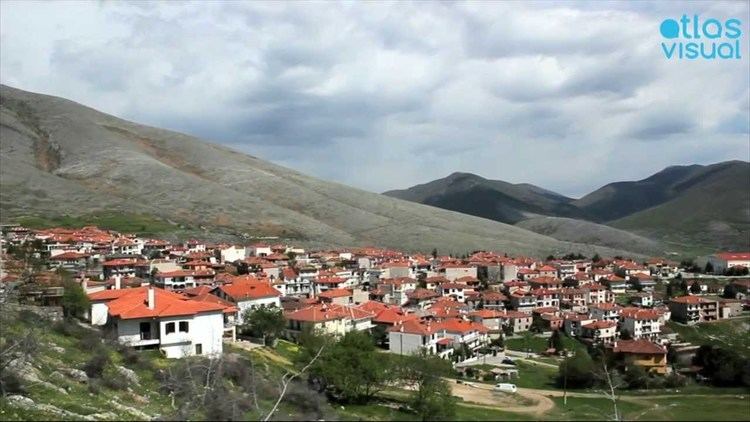Lowest elevation 850 m (2,790 ft) Postal code 503 00 Local time Tuesday 12:01 AM | Highest elevation 980 m (3,220 ft) Time zone EET (UTC+2) Area code(s) 0030-2465-xxx-xxx | |
 | ||
Weather 9°C, Wind SW at 3 km/h, 69% Humidity | ||
Siatista (Greek: Σιάτιστα) is a town and a former municipality in Kozani regional unit, West Macedonia, Greece. Since the 2011 local government reform it is part of the municipality Voio, of which it is the seat and a municipal unit. It lies 28 kilometres (17 miles) southwest of Kozani. The municipal unit has an area of 158.524 km2, the community 94.426 km2. The 2011 census recorded 5,490 residents in the town and 6,247 in the municipal unit. It was built on the austral slope of the Velia mountain on an (average) height of 930 metres (3,051 feet). The first name of the city was Kalyvia, because the city was known for its huts. This name is referenced in the archives of the Zavordas Monastery.
Contents
Map of Siatista 503 00, Greece
Administrative division
The municipal unit of Siatista consists of the following municipal communities (populations as of 2011):
The municipal community of Palaiokastro comprises two settlements: Palaiokastro and Dafnero.
History
In 1745, the city is referenced in a formal document of Joseph, Patriarch of Ohrid. The commercial ties between Siatista and many European countries during 17th and 18th centuries were very successful, and allowed the inhabitants to build many mansions and churches with wonderful frescos and icons.
Siatista lies in a unique setting where its mountains and wilderness provide a strong sense of solitude. As a result, many Siatistan had to become merchants as to import (or export) necessary goods. Many of them found their way abroad permanently or temporarily where they distinguished themselves as able and reliable merchants. Many of them who became wealthy never return in their town staying for ever in the big cities all over the Balkan Peninsula. Those who choose to return built large and elegant mansions distinguished by their thick walls, imposing doors, lavishly decorated "ondas", gorgeous stained glasses, and lively colours in the folk paintings on their walls. All of this embodies their high standard of living, a rather rare phenomenon for such an isolated town. Many of those mansions are still in good shape today in the old city.
One of such a self-made wealthy merchants was Theodoros Dimitriou who together with his wife Afrati left their town at 1790 for Zagreb, then an Austro-Hungarian city. He managed to earn a significant fortune by trading a variety of goods which helped them to give a proper education to their children. Of them, Dimitrios destined to become a famous and celebrated personality for his role as a leading figure in the movement for the national awakening of the Croatian people (then under Austro-Hungarian rule) as a national writer, poet, dramatist and political activist. Recognized as one of the most learned people of his time, he was the first who imposed the Croatian language in the local literacy, he created the National Croatian Theater in Zagreb and became famous for his political activism for the Croatian national revival through his key role in many Croatian patriotic pamphlets at the time. Demeter's award for drama which established 35 years after his death (1872) stood until nowadays and his bust decorates the yard of the Croatian National Theater in Zagreb.
In 1888 Ioannes Trampatzes, another expatriate Greek merchant, this one in Romania, donated the funds for the Trampatzeion Gymnasium. The gymnasium housed two large libraries, the Manouseios with 5,000 books and the Roussopouleios with 2,000.
Siatista was liberated from the Ottoman Turks by the Greek army, on November 4, 1912 during the First Balkan War.
